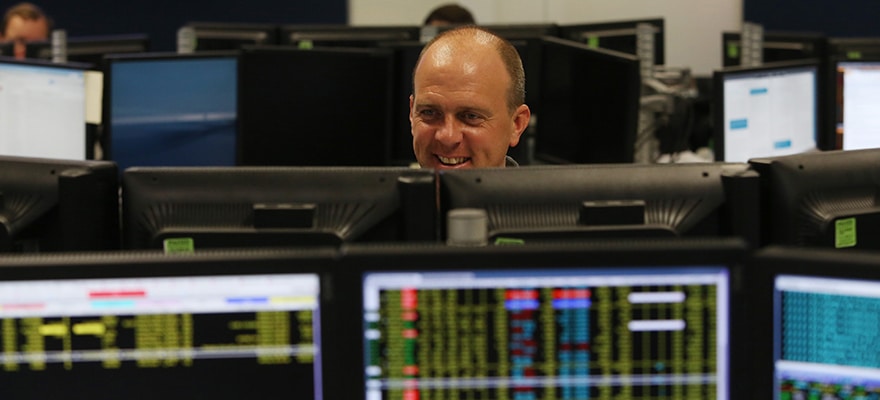This article was written by Steven Harcourt. He has worked in a financial trading firm for 15 years and has developed a number of online training programs for traders with a focus on identifying strategies to maximise returns on leveraged products. He holds a Ph.D. in Economics and is Managing Director of BinaryOptions4x4.com. Stephen is the author of the book ‘The Definitive Guide to Trading Binary Options’.
Anyone who has ever considered trading Binary Options will be well aware of the claims that are made by brokers and the various vendors of software and training. I won’t repeat them here. Suffice to say that they often promise fairly eye-watering returns.
This is important because these claims can lead to very high expectations among traders. This will usually result in poor risk control and a failure to develop a reliable trading methodology.
Are the claims false? And what should a trader reasonably expect to achieve? It’s possible to earn high returns. Of course you can get lucky.
But is it probable that you will do so? And even if you do get a lucky streak, how long will it continue? And what then?
Your Objective as a Trader

Steven Harcourt
Your objective as a trader is to earn profits. If you think it’s anything else then you need to think again. So the question is how you might maximise your chances of earning a good return.
Most top traders and authors on trading give the same answer – don’s lose much and earn over the long-term. This means that traders must protect themselves against the ‘forget risk, earn quickly’ mentality that seems to dominate much of the advertising in Binary Options sector.
The Importance of the Win Rate
The key driver of profits when trading Binary Options is the percentage of winners. If you trade without a good trading system then you should expect that 50% of your trades, at best, will be winners. After all, you’re basically tossing a coin.
Vendors of signaling software or robots often claim success rates of 80% or even more. The implication is that if you take the trade in line with the signals they provide then you will have a winning trade 80% of the time.
This sounds good, but is it too good? How might you assess a claim such as this?
To start, let’s say you buy a signaling product that claims 80% success. Now look at what you should expect in terms of profits from a system with a success rate of 80%.
Assume you take 100 trades with $10 risk on each and an average payout ratio of 75%. This trading makes a profit of $400.
Now let’s say you were trading quite conservatively so that you put only 2% of your finds at risk on each trade and you took 5 trades per trading day. It would take about a month to reach 100 trades.
For $10 risk per trade then the fund must have been $500 to start. So you would have made a profit of 80% in a month.
How Does That Sound to You?
Pretty good. So you keep it going simply following the signals that are provided by the software you have purchased.
The next month your fund is now $900 so you can increase your trade size to $18 and still keep within the 2% per trade limit.
Keep this up, constantly adding your winnings to your fund and increasing your trade size accordingly. In 1 year your fund will have grown from $500 to around $1 million.
So, in a year, you’re a millionaire. Without really doing very much in terms of learning to trade or to analyse markets. Signals are easy to follow and it’s very easy to place trades. So your only input is a few minutes a day.
Does this still sound like a reasonable expectation? Of course not.
Why should you expect to earn money so easily. After all, someone else must be losing that money. If it’s that simple, why isn’t everyone doing it?
There’s something wrong here. What’s wrong is that you cannot expect that any system will consistently give you 80% winners, except over very short periods.
What Is Your Success Rate?
If you are trading with an average payout in the region of 75% you will need close to a 60% win rate, just above 57% to be precise, to be profitable.
So, forget about achieving 80% success, or even 70%. Winning 60% would mean you are profitable, even if the average payout ratio is low.
Since it is reasonable to expect that random trading will produce a 50% success rate, the question you must address is how you can get this up from 50% to 60% or above.
Some Questions to Ponder
Do you know what success rate you are getting with the system you are currently using to identify trades? If you can’t achieve 60% wins, why would you expect 70% or 80%?
Your objective is to earn a positive return. You might earn big but it is not probable. Make sure you stick to good risk control. Do you have this in place?
You will not do this unless you have reasonable expectations. You are not going to achieve a win rate of 80% or returns of 40 or 50% per month unless you just hit it lucky for a short time.
Aim to develop a system that will get you above 50% wins and then work from there. Consider 60% to be successful. Of course you can build further from there but that is a very good target.
At that stage you should be able to answer a key question about your trading very comprehensively. What is it about you that means you should expect to be achieving good returns?
What is your edge? Until you can give a good answer to this and point to the evidence you are still in the initial learning stage. Perhaps you will be a star trader one day. But not yet.






















